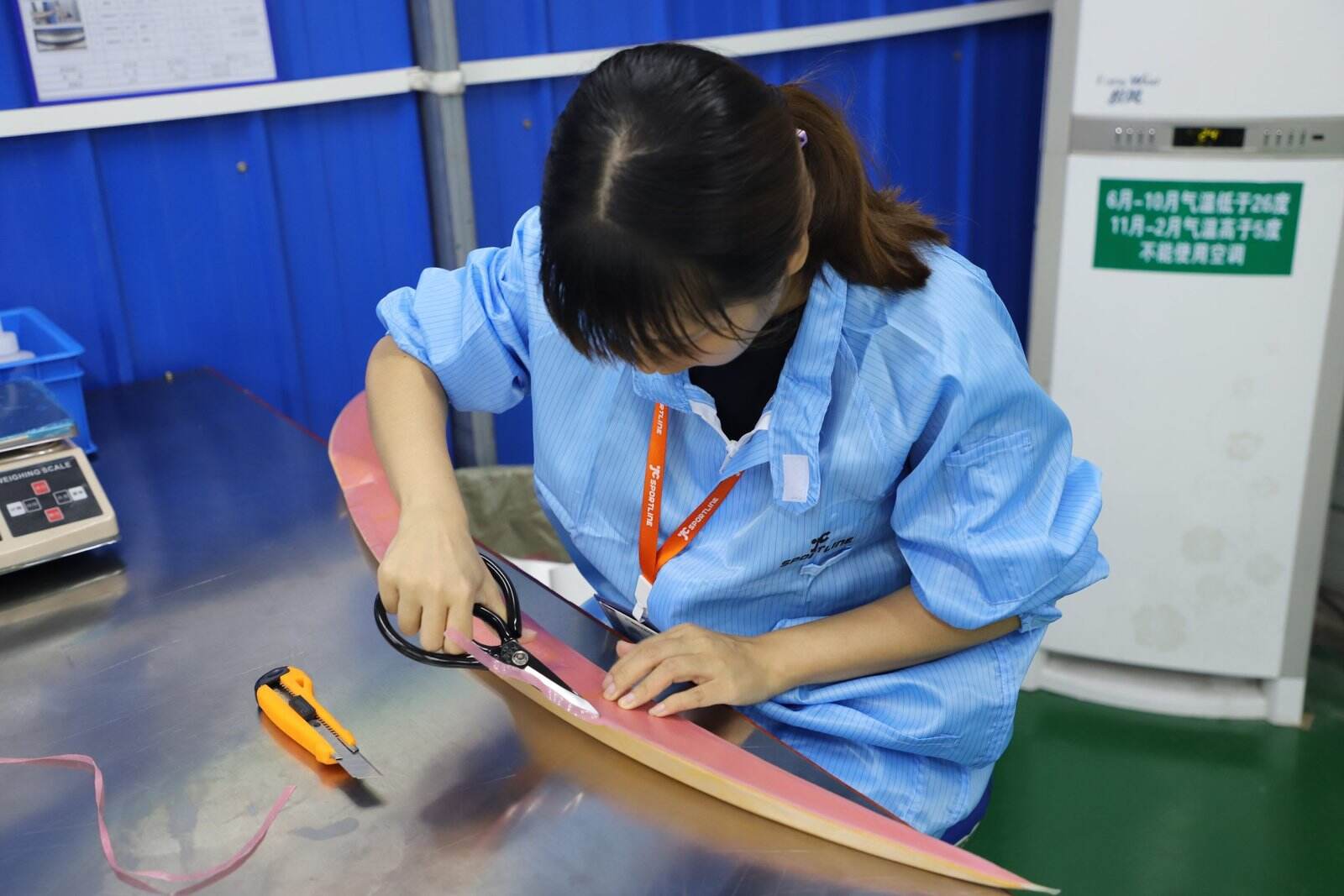PREPREG COMPRESSION MOLDING(PCM)
Process Flow

The molding process leverages the resin curing reaction stages to achieve product formation, wherein the molding material undergoes plasticization, flow, and mold cavity filling before resin curing occurs. Unlike other wet carbon vacuum processes, this process involves high-pressure molding due to the flow of both resin and reinforcing material, necessitating a hydraulic press capable of pressure control and a high-strength, high-precision, and high-temperature-resistant metal die. Primarily utilized for structural, connecting, protective, and electrical insulating parts, it finds extensive applications in the composite industry.
Fortunately, Jcsportline introduced a significant amount of molding equipment in 2020, garnering praise from customers worldwide.
Advantages:
- Lower quality defect rate (typically 2% ~ 5%).
- Low internal stress and minimal warpage deformation, ensuring stable mechanical properties.
- Minimal wear on the die cavity, translating to low maintenance costs.
- Lower equipment cost and simpler mold structure compared to injection or transfer molding molds.
- Ability to form large flat products limited only by the clamping force and template size.
- High productivity with the potential for a large number of cavities on a given template.
- Compatible with automatic feeding and product extraction.
- High production efficiency and potential for professional and automated production.
- Solves clamping line thickness issues for products like tail wings.
- Facilitates mass production at a relatively low price, addressing the low production capacity of carbon fiber products, with one mold capable of producing 8-16 products daily.
Disadvantages:
- Complex mold structure throughout the manufacturing process, surpassing traditional carbon fiber molds.
- Unsuitable for molding complex products with depressions, side slopes, or small holes.
- Difficulty in fully filling the mold during manufacturing, requiring specific technical expertise.
- Some shortfall in meeting high dimensional accuracy requirements, especially for multi-cavity molds.
- Thick product flash necessitating significant removal effort, often requiring inspection tools.


 EN
EN
 AR
AR
 BG
BG
 HR
HR
 CS
CS
 DA
DA
 NL
NL
 FI
FI
 FR
FR
 DE
DE
 EL
EL
 HI
HI
 IT
IT
 JA
JA
 KO
KO
 NO
NO
 PL
PL
 PT
PT
 RO
RO
 RU
RU
 ES
ES
 SV
SV
 CA
CA
 TL
TL
 ID
ID
 LV
LV
 LT
LT
 SR
SR
 SK
SK
 SL
SL
 UK
UK
 VI
VI
 SQ
SQ
 HU
HU
 TH
TH
 TR
TR
 FA
FA
 GA
GA
 IS
IS
 LA
LA
